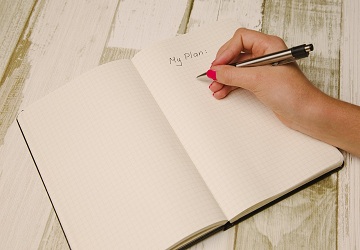Stress and anxiety are common problems in today's fast-paced lifestyles. People often feel overwhelmed and overwhelmed by the ever-increasing demands of work, family, and social obligations. By using this approach, anxiety can be effectively managed and its impact on daily life reduced.
This article explores how mindfulness therapy can help people with anxiety disorders. Several methods and techniques are presented that can be used both inside and outside of therapy. Incorporating mindfulness techniques encompasses a broader practice than simply deep breathing and affirmations. These activities can be done individually or in teams and usually do not require any special equipment or contraptions.
This article is about the benefits of mindfulness therapy for people with anxiety disorders. Various methods and strategies are suggested that can be used within or outside of counseling.
What is Mindfulness?
Mindfulness means acknowledging and embracing the reality of the moment and focusing on our whole self. Focusing on your own thoughts and bodily experiences can have therapeutic effects and promote a deep understanding of yourself.
Mindfulness means being aware and aware of our inner state and our surroundings. This makes it easier to improve our ability to concentrate. We are motivated to increase our awareness and understanding of our mental processes, emotions and bodily experiences.
Developing mindfulness requires intense focus and consistent practice. We're here to introduce you to different mindfulness exercises, help you focus on them, and help you integrate them seamlessly into your daily life.
Mindfulness Practices for Stress Reduction and Clarity

Just sitting and drinking water does not instantly calm the mind. There are several strategies to restore your focus and mental stability. However, you must realize that it takes time to reach a state of calm. To maintain a sense of peace in particularly turbulent situations, it is necessary to connect with your instinctive feelings as a human being.
Here is a list of 10 mindfulness exercises to bring clarity to your everyday life.
1. Mindful Walking
Notice the feel of your feet touching the ground, the movement of your arms, and the sounds and sights around you. During your walk, be aware of your body's movements and your surroundings. Through mindful walking, you can effectively reduce stress and anxiety levels while improving your overall physical and mental health. Participating in this activity can help achieve a state of mental relaxation and reduce anxiety.
2. Visualization
Use your imagination to imagine a calm and soothing environment such as a beach, forest or mountains. This visualization method is a powerful mindfulness practice that can help reduce anxiety and negative thinking. Using this technique can relieve stress while promoting a sense of calm and contentment. Picture yourself in this calm and peaceful setting.
3. Body Scan
Imagine a comfortable position where you lie on your back and pay attention to every part of your body, from your toes to your head. A body scan is a simple mindfulness practice that can make you more aware of the physical sensations happening in your body. Notice any physical sensations, muscle tension, or emotional reactions in different parts of your body, and try to release any tension or anxiety.
4. Thanksgiving
Take short breaks each day to reflect on the aspects of your life that you value. Gratitude can change your perspective by shifting your attention from negative circumstances to positive ones.
5. Muscle Relaxation
Focus on specific muscle groups and hold the contraction briefly before relaxing. This may ease anxiety and promote a better state of calm.
6. Keep a Diary

Writing down your worries, fears and anxieties can calm your mind by organizing them and giving you a clearer perspective. The method is simple and effective for managing your emotions and understanding your thought patterns and behaviors.
7. Loving-Kindness Meditation
Picture yourself surrounded by love and compassion; close your eyes. Repeat kind words and convey appropriate blessings to those you care about.
8. Use Technology Sparingly
Mindful use of technology means staying alert and focused on the present moment. Technical equipment, on the other hand, can create feelings of tension and unease. It is important to set limits on social media use and other forms of digital disruption.
9. Take a Deep Breath
First, find a quiet and comfortable place, sit down and close your eyes. Inhale deeply through your nose to fill your lungs with oxygen. Hold your breath for a moment, then exhale slowly from your mouth. Practicing deep breathing can help achieve a state of calm mindfulness.
10. Listen Attentively
To practice mindful listening, pay attention by paying attention to the other person's verbal cues, tone of voice, and nonverbal gestures. This simple mindfulness practice can improve connection with those around you, reduce tension, improve communication, and reduce stress levels.
Diploma
Remember that mindfulness is a learned skill that takes practice; therefore, approach your mindfulness adventures with self-compassion and tolerance. Many simple mindfulness practices can reduce stress and anxiety while improving overall well-being. By investing time and energy in improving yourself, it is possible to develop an enhanced awareness of inner peace and contentment.
(Images from the internet)





